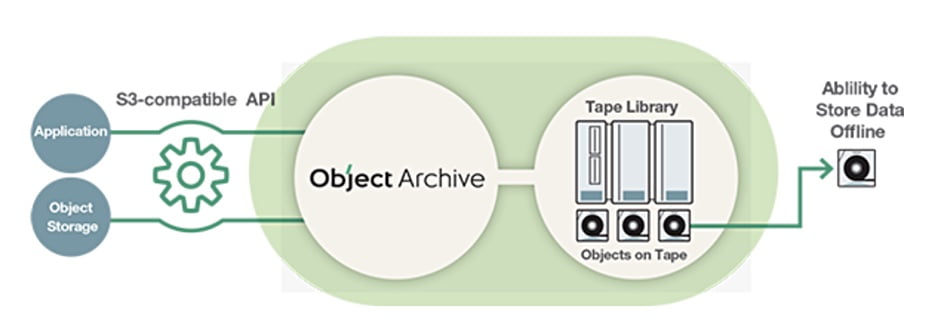
Fujifilm is paving the way for tape cartridges and libraries to become object storage archives.
Traditionally files from backup software are stored sequentially on magnetic tape for long-term retention. The last major innovation in tape storage access was LTFS, the Linear Tape File System, in 2011. This provides a file:folder interface to tape cartridges and libraries, with a drag and drop method for adding or retrieving files.
Now Fujifilm has developed a method for transferring objects and their metadata from disk or SSD drives to a tape system. This means tape can be used as an archive medium for object data.
Fujifilm’s new open source file format, OTFormat, enables objects and metadata to be written to, and read from, tape in native form.
The company’s Object Archive software uses OTFormat and an S3 API interface to provide the framework for an object storage tape tier – a software-defined tier, as Fujifilm puts it.

This tape tier can be an on-premises tape library. Fujifilm said storing petabytes of object data is much cheaper on tape drives than on drives or SSDs. It is also cheaper than the public cloud. However, tape’s slow access speed makes it suitable only for archiving low access rate objects or for object storage backup where slow restoration times are acceptable.
According to a Fujifilm White Paper, tape has a 4x data reliability superiority over disk drives. Tape also provides a literal air gap between the network and the tape cartridges when the latter are offline. This provides immunity from ransomware and other malware attacks, and a reliable means of recovering ransomeware-encrypted data.

Fujifilm is a maker of LTO tape; the current generation is LTO-8 and 12TB raw capacity per cartridge, 30TB compressed. The LTO roadmap extends to LTO-12 with 192TB raw capacity, 480TB compressed. LTO-12 tapes will hold up to 16 times more data than LTO-8 cartridges. There’s lots of capacity headroom, in other words.
No UI or data mover
Fujifilm had not revealed at time of publication a user interface and data mover for its Object Archive. Such an UI/data mover is needed to select older and low-access objects from a disk or SSD-based object store, and move them to a tape system. It would also present a list of objects on the tape system and a means of retrieval.
Fujifilm perhaps needs one or more third parties to provide object backup and restore capabilities. There is a long list of potential partners. Speaking of which …. Jerome Lecat, Scality’s CEO, when asked about Fujifilm’s Object Archive, told us: “Unfortunately I cannot tell you anything more specific today, but watch our news in the coming weeks, especially around Zenko.”
source: blocksandfiles





